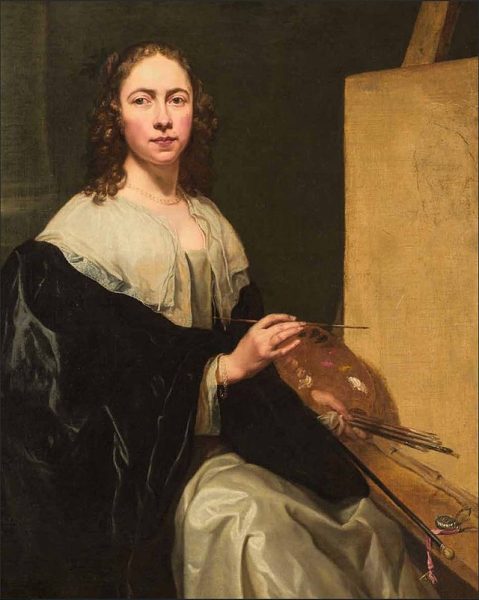The Many Meanings in Art: A SLUMA Showcase
A few choice excerpts from SLUMA’s extraordinary collection
Aerial photos of O’Donnell Hall, home of the Saint Louis University Museum of Art.
The word museum comes from the Greek word for “the shrine of the muses.” The muses were inspirational gods of the arts and sciences. Taken literally, a museum is a shrine dedicated to the inspirational acts of others. It’s a place where one can contemplate marvelous works, draw their own unique meanings and inspire change in people’s lives. The Saint Louis University Museum of Art (SLUMA) is home to many amazing pieces of art from various genres and artists.
SLUMA has a stellar collection for students to see and admire.
- “Chairman” by Eric Nordgulen
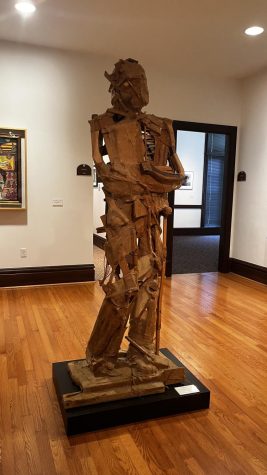
Fernanda Birimisa
This piece is a real attention grabber. It’s simple: the parts of a chair re-arranged into a human-like form. However, there is something extremely off-putting in seeing such unassuming materials take on an imposing and expected form. Nordgulen successfully instills the idea of re-examining how we interact with the world and the objects we don’t think about.
2. “Disc No. 2” by Arnaldo Pomodoro
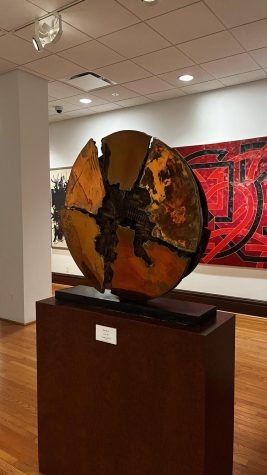
This sculpture appears as something that will be in a future museum as an artifact of human technology. The tears in the glossy material makes the piece look like it has survived a crash of apocalyptic proportions and the textures underneath give it an elusive but familiar future technology quality. It is interesting to compare the artifacts of history and hypothesize what these new artifacts might look like and the stories behind them.
3. ‘Superficie, 206” by Giuseppe Capogrossi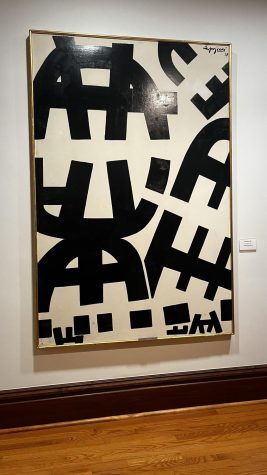
The artist, Giuseppe Capogrossi, was educated as a lawyer, but an artist by trade. Caprogrossi used multiple styles in his career, but his most famous was his use of a comb-like symbol called Superficie (Surfaces). With this style utilized, the piece has a puzzling allure. The piece appears like an unreadable language. The simplicity, yet uniqueness, in each symbol and the stark contrast of the black and the white canvas give it a book-like quality. No matter how long you look at it, there will never be a definite message revealed. One possible message from this piece is that not everything will be known, and there is some knowledge that is lost to us or will never be obtained, but that’s okay.
4. “New England Harbor” by Henry Chase
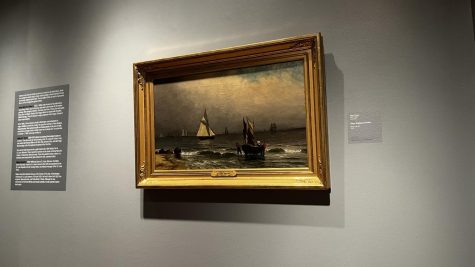
As a part of SLUMA’s current “Landscape” exhibition, this piece shows a nautical scene. This is a classic style and there is something alluring about the vastness of the sea and the elegance of the ship. There is also a dualist dynamic present in the piece. The calm of the beach and the gentle tide compared to the bustling scene in the background of multiple ships going their own way, each with their own story and goal.
5. “Park Bench” by Bessie Lowenheupt
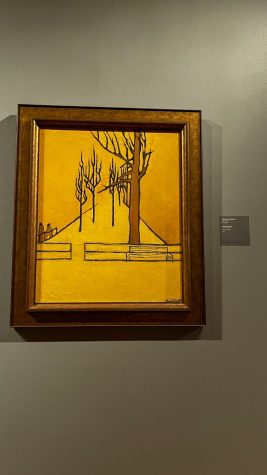
This piece is also a part of SLUMA’s “Landscape” exhibition, though in a very different and distinct style. George McCue, in the St. Louis Post-Dispatch, describes the work as “sophisticatedly naive,” and I agree. In the very sparse imagery, Lowenhaupt is able to convey the scene quite well. Lowenhaupt practiced a style called memory drawing in which she would create the scene from memory and not a model. Lowenhaupts style shows how intriguing the human mind is, in what it remembers and how little it needs in a scene to create a unique experience.
These are just a few pieces from SLUMA’s collection, and people ma
y draw different interpretations of them. This is why art and museums as a whole are amazing, for we each can get a unique experience from them and they can have very personal impacts on our life. SLUMA has more pieces on display with seemingly endless messages and meanings for the viewer. So whenever you can, explore the art available for viewing on and off SLU’s campus and draw your own meanings from the pieces.
Your donation will support the student journalists of Saint Louis University. Your contribution will help us cover our annual website hosting costs.



![The Teskey Brothers [Crew] gather together for a curtain call in front of a raucous St. Louis crowd after a two-song encore. (Photo courtesy of Vertrell Yates / @trellseyephotography)](https://unewsonline.com/wp-content/uploads/2024/05/Screenshot-2024-05-21-232057-600x370.png)








